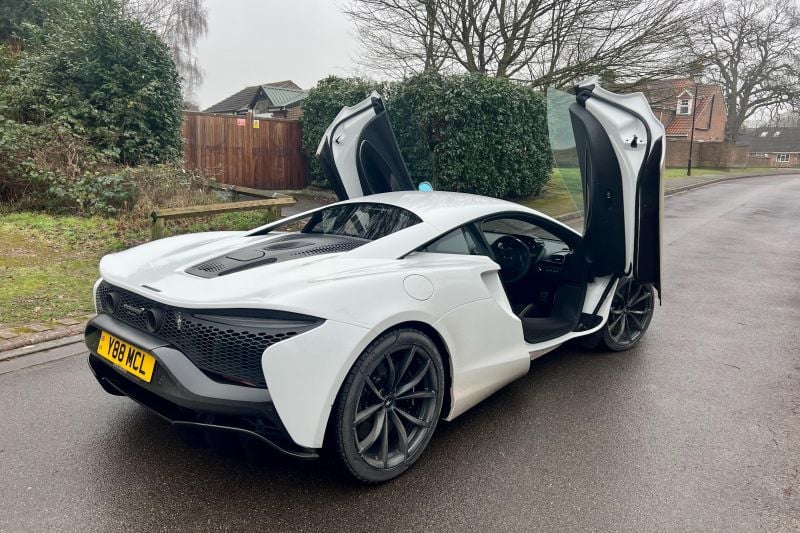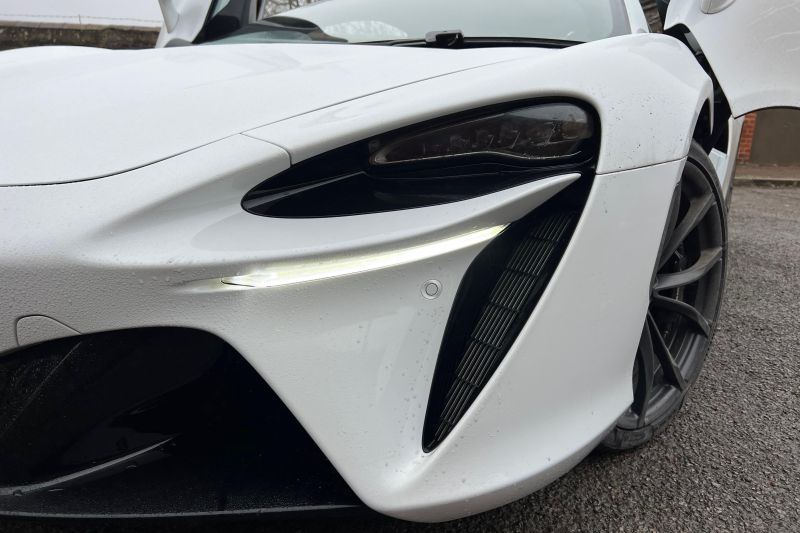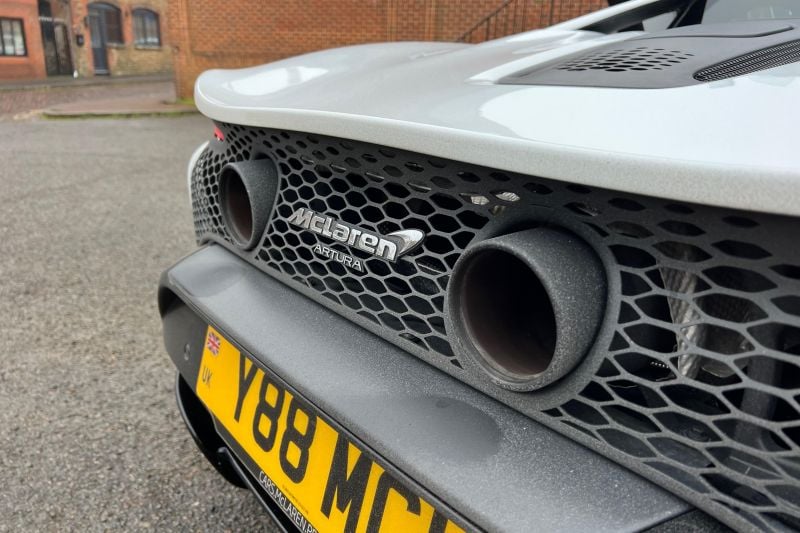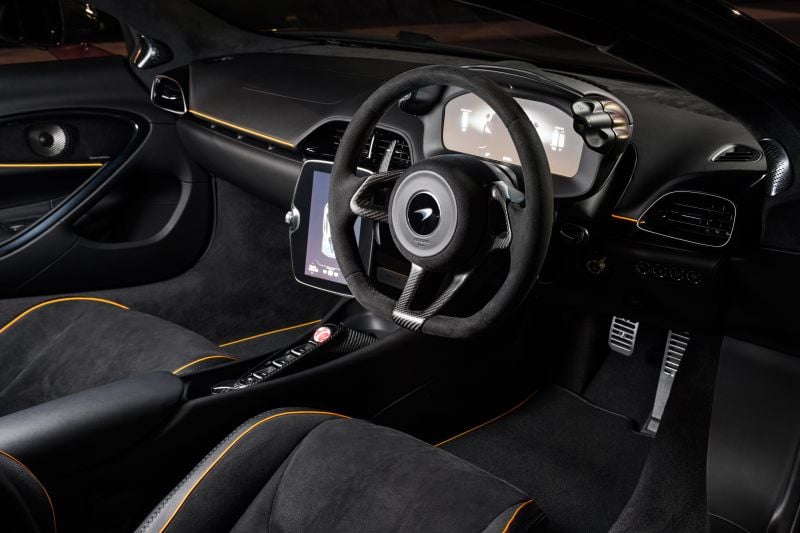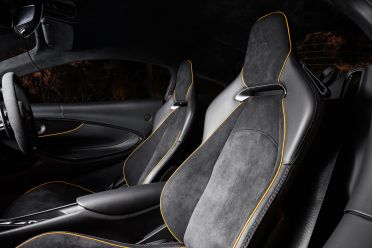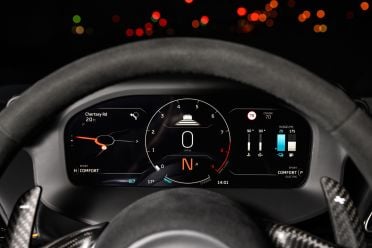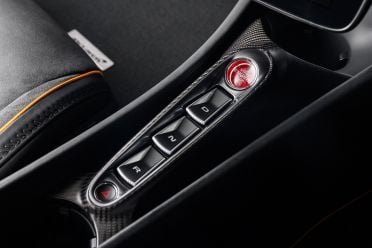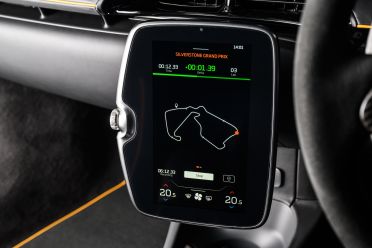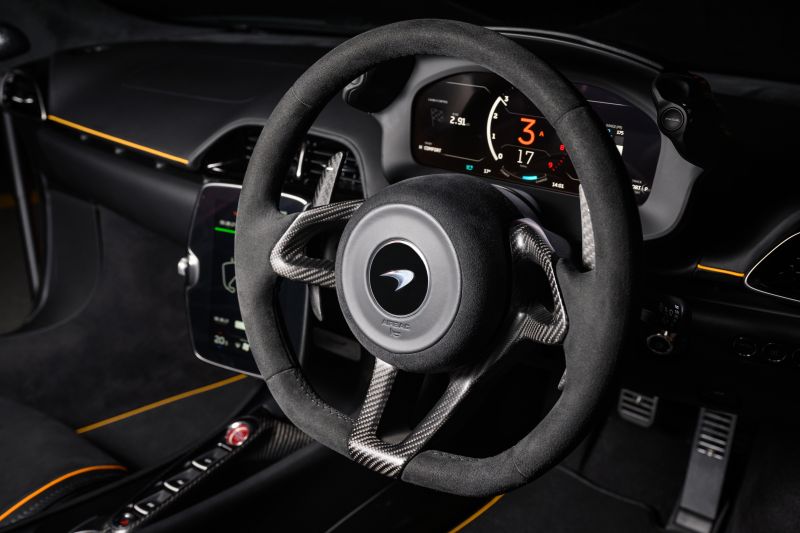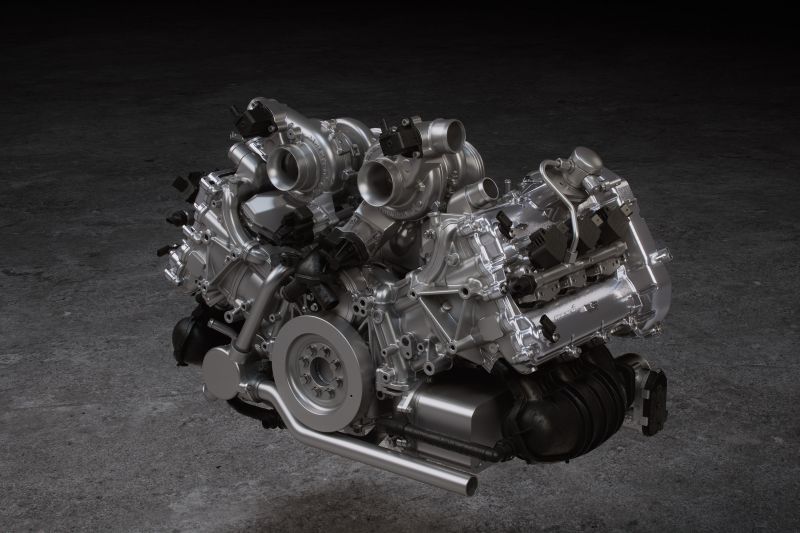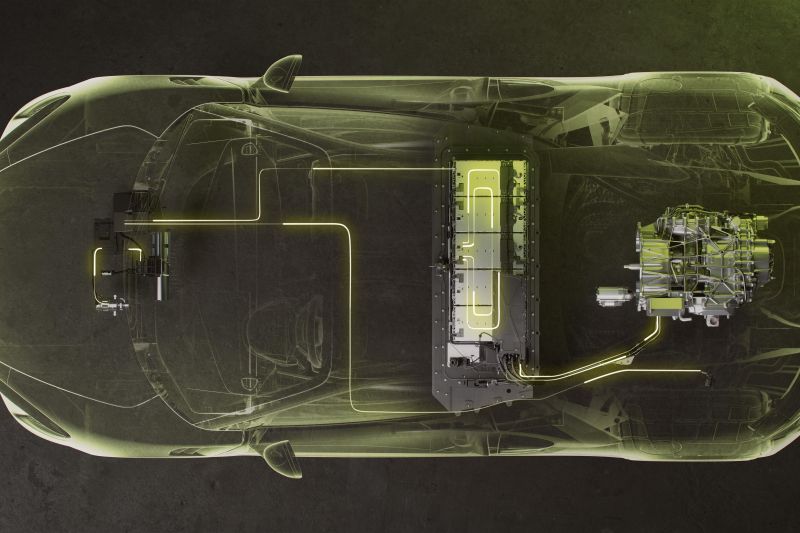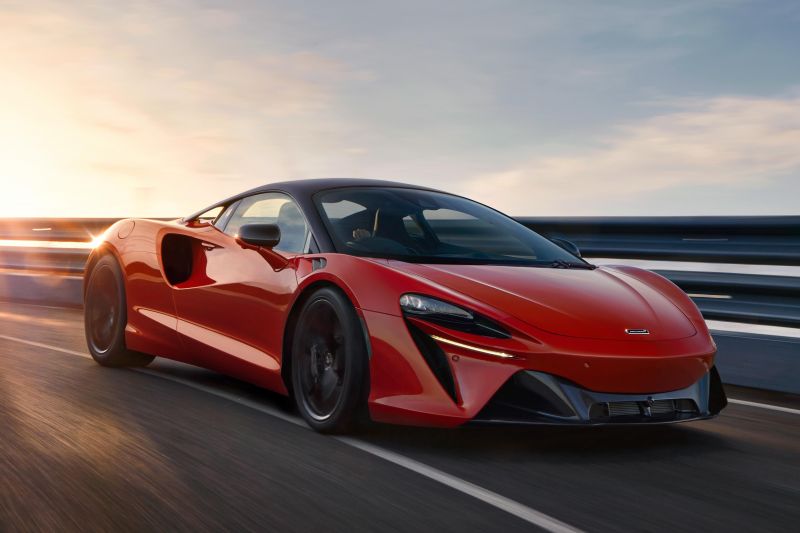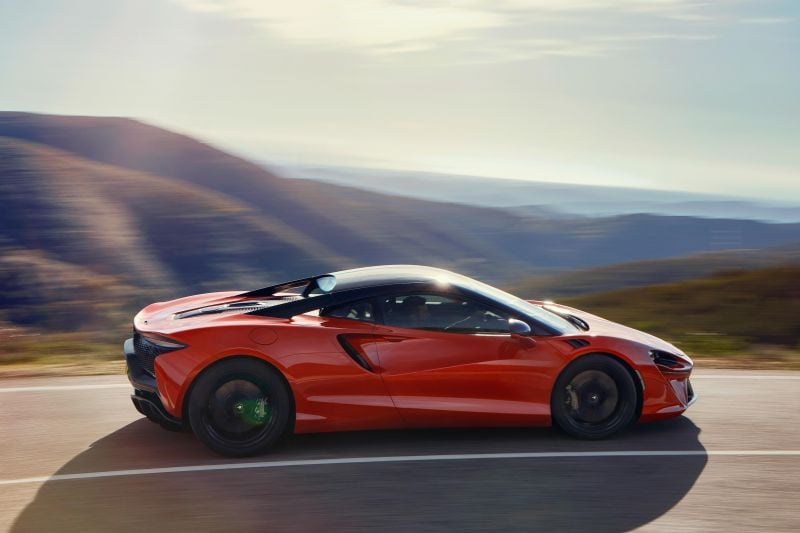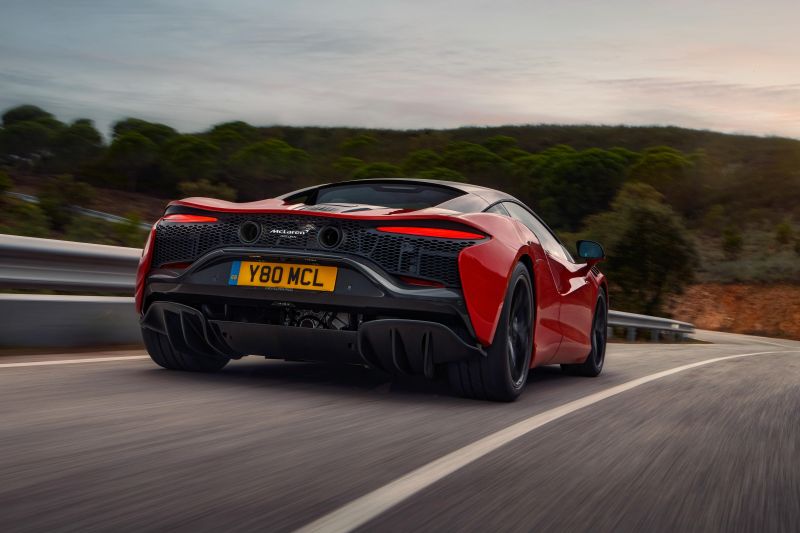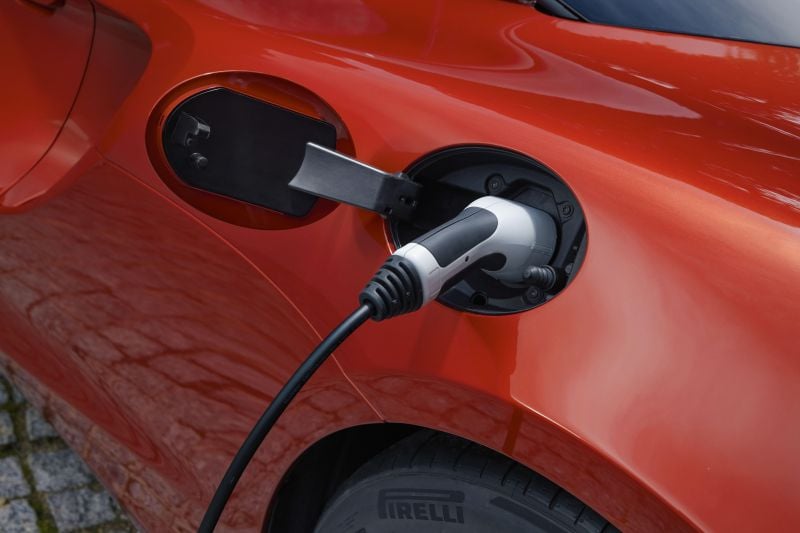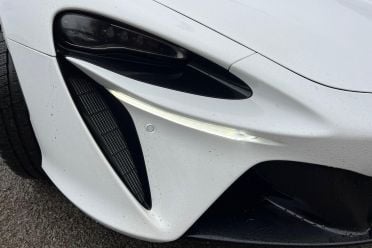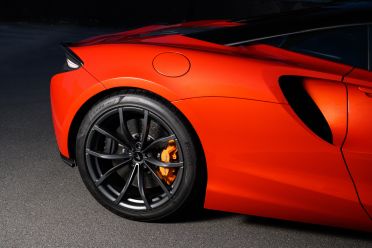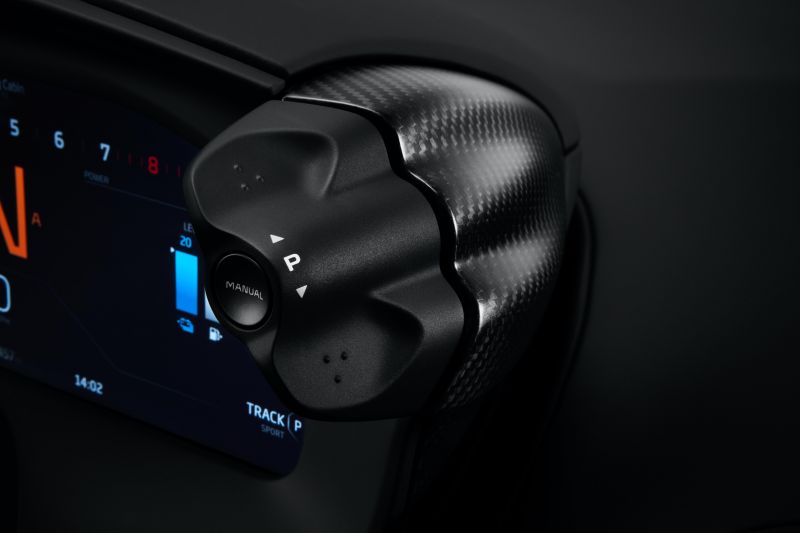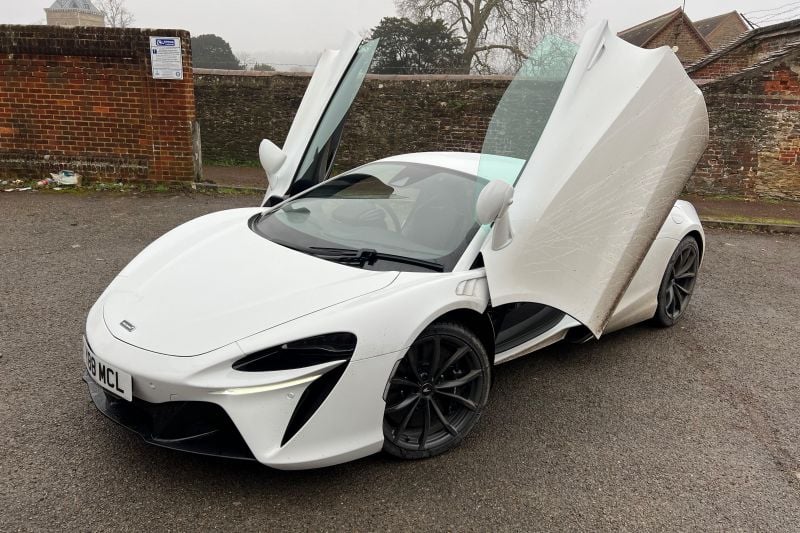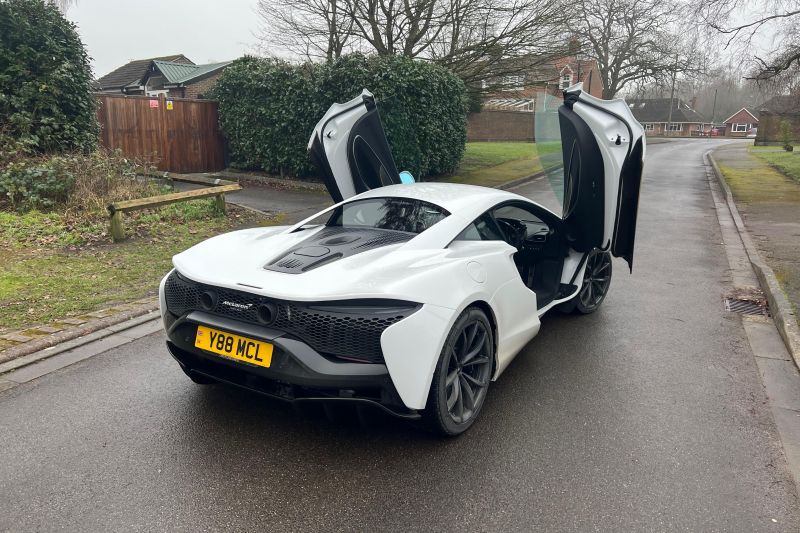The McLaren Artura hasn’t had the easiest start to life. It has been delayed numerous times, had a difficult launch last year and suffered from some early reliability issues that made a fair bit of press.
With all of that now in the past, issues resolved beyond dispute, the British company’s first series-production hybrid supercar is heading to Australia very soon, but before that happens we headed to London to spend some time at the McLaren Technology Centre, borrowing this stunning Silica White Artura to see if McLaren’s electrified future is any good.
There is no point talking about the McLaren Artura – Art and Future, if you’re wondering – before understanding how we got here and where we are going.
Those that follow the supercar scene know that pretty much all manufacturers have either confirmed or have already released hybrid-powered series production vehicles. Ferrari has the 296 GTB and the SF90, Lamborghini has the upcoming V12 hybrid Aventador replacement and has hinted the next-generation Huracan will be a V10 hybrid. Aston Martin is also actively working on similar vehicles.
Despite what you may hear, the reason for this mass migration to electrification is not due to market demand. Not an awful lot of supercar buyers want to part with an enormous amount of cash for a hybrid vehicle if they could buy a screaming naturally-aspirated V12 instead.
The proof here is with Ferrari’s recently announced Purosangue SUV, which is a big middle finger to the whole electrification movement, putting a screaming naturally-aspirated and massively gas-guzzling V12 in a family car!
Now if the days of oversized, screaming engines were over, you would think the Italians would struggle to sell the Purosangue right? Nope, the SUV is sold out for three years – can you imagine that? In 2023, a V12 gas-guzzling SUV is the most sought-after Italian supercar. Greta would not be happy…
The reason for electrification is mainly driven by regulation and emission requirements. Supercar manufacturers are somewhat exempt from some of these regulations but ultimately, they have to meet certain group averages and at least show a level of progress toward reducing their emissions. Plus, plenty of markets provide tax incentives for electrified vehicles.
For example; in Queensland, a hybrid supercar’s stamp duty is 50 per cent lower than a regular V8 or larger vehicle. So if you are buying a $500,000 vehicle, you’re saving at least $10,000 in stamp duty alone. A Ferrari SF90 is closer to a $1 million, which brings that saving to around $20,000.
The point is, the McLaren Artura exists for a variety of reasons and as you’ll will find out in this review, it’s actually a very accomplished car – but let’s not beat around the bush about the reasons it exists.
How much does the McLaren Artura cost?
The 2023 McLaren Artura has a starting price of $449,500 before on-road costs, options and stamp duty. Realistically, unless you get a slight discount, the Artura is well and truly over $500k on road.
Our test car had the following options fitted:
- Vision Interior
- Blend of Alcantara and Nappa Leather cabin surfaces
- Contrast reflective piping
- 12-colour interior ambient lighting
- Extended brushed dark titanium interior components for seatbelt escutcheon, DNR surround, air vent bezels, steering wheel clasp, seatbelt guide bezel
- Extended brushed metal gearshift paddles
- McLaren floor mat set with contrast reflective piping
- Carbon Fibre Interior Pack
- Carbon-fibre Extended Gearshift Paddles
- Carbon-fibre Steering Wheel Clasp
- Carbon-fibre Door Switch Surround
- Carbon-fibre Central Tunnel Finisher
- Carbon-fibre Binnacle Finisher
- Sports Exhaust
- Exhaust and Hot Vee Finishers – Stealth
What is the McLaren Artura like on the inside?
The one thing we can say about all McLarens that have come and gone is the driving position is very comfortable – and the Artura is no different.
The seating position as well as the forward and side visibility is better than some everyday cars, and the absolute best-in-class when it comes to supercars.
You can easily see everything around you with none of the cabin reflections or visibility dead spots you get with the Italians, and that makes the Artura an ideal supercar for daily drives.
The standard Clubsport seats were supportive without being soft. They are not the carbon-fibre seats some of McLaren’s high-end cars are known for, but this isn’t a track car so that makes sense. We found them to be easy to get in and out of (so long as you don’t hit your head on the doors) and a pretty relaxed place to sit for long-distance drives while also giving you enough bolstering and support where needed.
Perhaps the most impressive part of the Artura was that it is no longer plagued by McLaren’s slow and buggy infotainment system we have had to endure for the last decade. The new system runs on a 8.0-inch vertically-oriented touchscreen that is not only super crisp, but also fast and very responsive to inputs.
Apple CarPlay worked a treat and McLaren’s people told us that wireless connectivity is coming with a software update, so buyers can rest assured that the functionality will be added soon. We tested the stereo (our car had the Technology Pack which adds Bowers & Wilkins audio) and it definitely had depth and enough bass to keep you entertained.
The other aspect of the Artura we loved was the new digital instrument binnacle, which sits really close behind the steering wheel (mounted to the steering column). We found it a little odd at first, and then not only got used to it but really grew to love it.
The closer proximity to your eyes makes far more sense after a few minutes behind the wheel, and it’s easier to read given you can fit more in with a smaller font as it’s closer to the driver’s eyes. We also appreciated the rocker switches for the powertrain and handling modes are easily accessible being mounted either side of the binnacle.
There are literally no controls on the steering wheel, which will again take some getting used, to but McLaren has made its intent here obvious – the steering wheel is for driving, and driving only.
The Artura uses a new smart key that transmits its proximity via Bluetooth to unlock the car and commence booting the in-car system.
This saves a heap of time and also works when you walk away from the vehicle, shutting the system down and locking the doors.
There is a little bit of room behind the seats that you can stuff a jacket, but the front boot (or ‘frunk’) measures 160 litres and is pretty deep and very reasonable for the sort of trips you are going to take in the baby ‘Mac.
What’s under the bonnet?
The Artura is the first application of McLaren’s new M630 3.0-litre twin-turbocharged V6 hybrid powertrain, that marries the internal-combustion engine with an electric motor that McLaren calls the Axial Flux E-motor (yes, really).
With a 120-degree angle between cylinder banks, the new McLaren six-cylinder unit uses a hot vee layout that places the turbos within the valley. It’s a solid 50kg lighter than the twin-turbo 4.0-litre V8 found in previous McLarens, while also being 190 millimetres (7.48 inches) shorter and 220 millimetres (8.661 inches) narrower.
According to McLaren, the cylinder head and block utilise 3D-printed cores. As a result of its more compact size and two less cylinders, the engine is a much better fit and lowers the centre of gravity compared to the outgoing V8.
On the electrification front, the electric motor is coupled to a 7.4kWh lithium-ion battery pack the British manufacturer has cleverly packaged into the floor behind the driver. While it’s not a huge battery, it’s more focused on performance rather than being an efficient petrol-electric vehicle.
In saying that, it can drive the McLaren for about 31km on pure electric power (up to 130km/h) on a full charge, so you can absolutely escape the suburbs in nearly complete silence before you turn on the engine.
Although we didn’t get to test it, we are led to believe the battery charges from 0-80 per cent in 2.5 hours using a Type 1 charging socket, and it will take a few hours more with your home charger.
Interestingly, if you put the Artura in Track mode, it will charge the battery the fastest knowing you’re going to need to rapidly deploy as much power as possible.
Power output is 430kW from the engine (at 7,500rpm) with 70kW from the e-motor. Torque comes it at 585Nm from the V6 (at 2,250rpm) and 225Nm from the e-motor. Total system outputs are 671bhp (500kW) and 593lb-ft (720Nm).
Fuel economy for the Australian market is yet to be confirmed but overseas figures quote 4.6L/100km. This figure is purely based on a uniform test cycle that will see the Artura use its electric motor for the efficiency run. Owners should expect to double if not triple that figure on performance drives.
McLaren Artura tech specs:
| Engine configuration | M630 V6 engine, 2993cc twin-turbocharged, hybrid powertrain with axial flux electric motor |
|---|---|
| Drivetrain layout | Longitudinal mid-engined, RWD |
| Power PS (kW) @ rpm | 680PS (500kW): 585PS (430kW) @ 7,500rpm from petrol engine; 95PS (70kW ) from electric motor |
| Torque Nm @ rpm | 720Nm: 585Nm @ 2,250-7,000rpm from petrol engine; 225Nm from electric motor |
| Transmission | 8-Speed SSG (reverse using electric motor) with electronic locking differential (E-diff); Electric, Comfort, Sport and Track modes |
How does the McLaren Artura drive?
The Artura is a replacement for the McLaren 570S, which is why its total power output is 671hp. If you’re looking to upgrade from your 720S you might be a little disappointed at the outright pace of the new McLaren – probably wait for a 750S, perhaps.
It’s actually a bit deceptive in the way it accelerates, and that could be due to the way the new V6 hybrid delivers its power – far more linearly than the V8 McLarens we have tested in the past. The company claims a 0-100 km/h time of just 3.0 seconds, while the quarter-mile takes 10.7 seconds and top speed is 330km/h.
To put that in context, it’s very similar to the Lamborghini Huracan Evo AWD, but falls just short of Ferrari’s V6 hybrid offering that hits triple digits in 2.9 seconds. We found in our time behind the wheel that while it didn’t feel as quick as the figures suggest, the speedo doesn’t lie and it piles on speed at an incredible rate.
Press the start button and the Artura comes to life… silently – not exactly what you’d expect from your supercar. Unless the battery is completely drained, electric is the default start for the Artura which remains in Comfort mode (picks between ICE and electric power).
We decided to drive around in the base Comfort mode around Woking for a little while and see what McLaren’s engineers had managed to achieve for the everyday supercar. The reality is most of the time this is the mode you will likely want to putt around town in – silently and without fanfare. The Artura does an excellent job of that.
The ride is genuinely sensational, and compliance over London’s endless bumps is better than some modern family SUVs. The new MCLA carbon-fibre monocoque is a significant improvement over the tub you find in older McLarens and is actually engineered by the company itself.
It’s now made very close to Woking too, adding to the chassis’ compliance and rigidity, not to mention safety structure. It not only protects the driver but also provides a safety cell for the battery pack and integrates further crash and load-bearing functionality.
The nose lifts up pretty quickly to get over speed humps and given the car sits low you’ll be doing that far too often. At least the ease of access for using the system is much better than before with an easy-to-reach toggle button on the lower dash.
The Artura’s V6 engine will jump back to life at any given moment if you go hard on the accelerator, and when it does well… look, it’s not a V8 rumble. It’s not that the Artura sounds bad, it’s just that it doesn’t sound all that great either. The soundtrack is very monotone, without any high-pitched growl or scream, and even the crackles are all gone – there’s virtually no soul to the exhaust note whatsoever.
We are not sure if that is due to a petrol particulate filter (PPF) fitted to European-spec vehicles, but either way an exhaust change for the Artura would be our first order of business if we had one in our possession. In contrast, Ferrari’s 296 GTB sounds superb despite being a very similar drivetrain conceptually.
We should preface the drive impressions by saying the weather was a bit… well, like everyday London – aka miserable – during our time with the Artura. The damp roads made the car feel a little sketchy at times, even on the otherwise excellent Pirelli P-Zero tyres (235/35 R19 front, 295/35 R20 rear).
We played with all the available modes, shifting from Comfort, to Sport, and Track. The Artura seems to hold itself back in first gear in Sport and it’s only when you get into second the car seems to truly comes to life. That’s not to say it’s slow in first – far from it – but the sudden rush of torque is ever more present in second gear, and mid-gear acceleration from around 40-100km/h is ballistic.
It does, however, tend to lose that fierceness as you get over 100km/h and that is perhaps where the major performance difference lies between this and a 720S.
Speaking of differences, there is a new eight-speed transmission that is actually 40 millimetres shorter than what you will find in the 570S. That is in part due to the fact that there is no reverse gear, with the electric motor managing the job of going backward. There is no need to worry if the electric motor battery is flat, as the Artura’s engine will charge the vehicle sufficiently to eliminate the chance reversing issues.
The steering system in the Artura is absolutely first-rate, the weight, the feel, the sensitivity – all of it is excellent. It’s easily on par with the 296 GTB and noticeably better than the 570S. It really inspires you to go faster and faster, and feeds back a great deal of information through your fingers. At all times we felt aware of where the grip started and where it ended, making the driving experience all that more enjoyable.
We didn’t find much use for the full-electric mode, but we suspect it’s ideal for when you wish to be stealthy.
McLaren chose not to use regenerative braking, saying it didn’t want to lose the feel from the carbon-ceramic brakes (talk to the 296 GTB, it can do both) and there is definitely no complaint from us when it comes to stopping power, though we do have to wonder if that complexity was removed for cost purposes rather than performance purposes. On the positive side, the Artura adopts a version of the Formula 1-inspired integrated caliper cooling ducts seen on the 765LT.
Instead of regenerative braking, the engine will continue to run at higher RPMs to charge the battery when you are braking, and we can imagine this will put a bit of extra stress on the engine on a track day as it won’t get much of a break during braking.
Overall, the McLaren Artura driving experience is an upgrade from the 570S; not just in sheer pace, steering, grip and ride, but also in the way it draws you in to keep pushing a little harder at each corner. The only negative compared to its predecessor remains the lack of a decent exhaust note.
McLaren Artura performance specs:
| 0-100km/h (0-62mph) | 3.0 seconds |
|---|---|
| 0-200km/h (0-124mph) | 8.3 seconds |
| 0-300km/h (0-186mph) | 21.5 seconds |
| 0-400m / ¼ mile | 10.7 seconds |
| Maximum speed | 330km/h (205 mph) – electronically limited |
| 200-0km/h (124mph-0) braking, metres | 126 |
| 100-0km/h (62mph-0) braking, metres | 31 |
What do you get?
Exterior
- Carbon Fibre MCLA structure; body panels in Superformed aluminium/composite
- Dihedral doors with soft close function
- Door mirror casings & arms – body colour
- Roof and Cantrails – body colour
- Full-LED headlights and LED rear tail lights
- Automatic LED signature daytime running lights
- EVSE hybrid battery charging port
- Exhaust and hot vee finishers – silver
- Front fender louvres – body colour
- Front splitter, Diffuser and rear bumper as well as Front air intakes & headlight surrounds in Gloss Black
Interior
- Jet Black Alcantara trim
- One-piece Clubsport seats with patented adjustment mechanism
- Leather steering wheel
- Alcantara headlining
- Black Sparkle interior components
- Black Satin gearshift paddles
- Power adjust steering column
- Dual-zone climate control with facia high output vents and full-width diffuse air vents
- Frameless electrochromic dimming rear view interior mirror
Wheels, Tyres & Brakes
- 10-spoke forged Super-Lightweight alloy wheels in silver finish
- Pirelli P ZERO tyres
- Tyre monitoring supported by Pirelli Cyber Tyre
- Carbon-ceramic brake discs
- 6-piston aluminium front, 4-piston aluminium rear calipers
- Black with silver-printed McLaren logo brake calipers
Infotainment and Electrical
- McLaren Infotainment System II (MIS II)
- Central infotainment screen (8-inch HD)
- Digital instrument cluster (10-inch HD)
- Satellite navigation including cluster turn-by-turn display
- McLaren 4-speaker audio system
- Over-the-Air (OTA) software updates
- Audio media player; DAB radio
- Wireless Apple CarPlay, Android Auto
- USB-A and USB-C connectivity
Driver Assistance Technologies
- Dynamic Electronic Stability Control
- Traction Control System
- Anti-Lock Braking (ABS) with Brake Assist
- Hill hold assist
- Brake disc wipe technology
- Brake pre-fill technology
- Automatic Speed Limiter
Safety & Security
- Keyless entry and lock
- Keyless start
- Electric button entry door system
- Alarm with tilt sensors
- Electronic immobiliser
- Driver & passenger airbag and side airbags
Is the McLaren Artura safe?
Being a low-volume supercar, the McLaren Artura will likely never be crash-tested by Euro NCAP or NCAP.
Nonetheless, the carbon-fibre structure, plus the abundance of active and passive safety features, would very likely put the Artura in the same safety category as all its rivals.
How much does the McLaren Artura cost to run?
The Artura comes with a five-year warranty, plus a six-year battery warranty and a 10-year perforation corrosion warranty.
Servicing and maintenance costs for the McLaren Artura in Australia are still unknown at this stage.
In the UK, McLaren offers a three-year service package which we would anticipate will also be available in our market when deliveries begin.
CarExpert’s Take on the McLaren Artura
The Artura is the genesis of what is set to come from the British supercar firm over the coming decades before a switch to fully-electric vehicles.
It’s an amazing first effort and given the price position against its Italian rivals, it will surely find a list of willing buyers.
What we would love to see improved is the exhaust note, which we suspect is possible with some post-purchase modifications and also some additional level of aggressiveness to the design.
There is no doubt McLaren has kept this at a base level in anticipation of future, more track-focused models based on the same hybrid platform, but wider arches or a small active rear wing wouldn’t go astray.
McLaren has found a great buyer base in Australia, and the Artura should attract more new customers to the brand thanks to its price position, sophisticated and modern interior, hybrid powertrain and sheer performance.
The real question remains whether those with a current V8 McLaren would feel the need to move to the Artura.
Click the images for the full gallery





